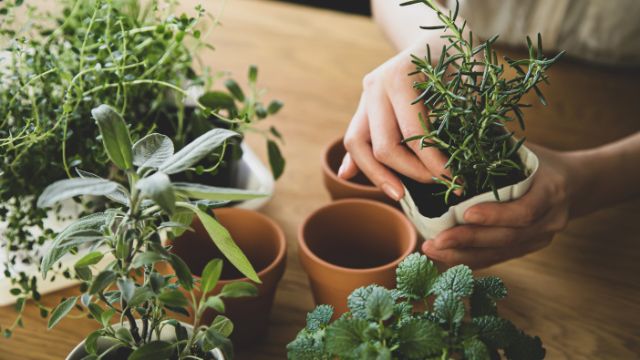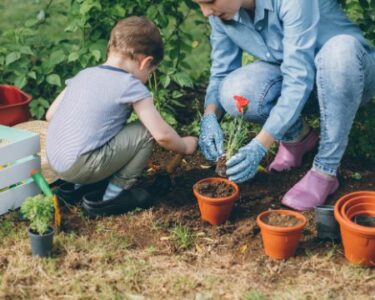Imagine stepping into your kitchen and snipping fresh basil, parsley, or mint to elevate your meals. Growing an indoor herb garden makes this dream a reality, bringing flavor, fragrance, and a touch of nature into your home. In 2025, indoor gardening continues to gain popularity as people seek sustainable, cost-effective ways to enjoy fresh produce year-round. Whether you’re a seasoned gardener or a beginner with limited space, cultivating herbs indoors is accessible and rewarding. This guide walks you through every step of creating and maintaining a thriving indoor herb garden, from choosing the right herbs to troubleshooting common issues.
Why Grow Herbs Indoors?
Indoor herb gardens offer countless benefits that make them worth the effort. First, they provide a steady supply of fresh herbs, which are often expensive at grocery stores. Homegrown herbs are free from pesticides, ensuring healthier meals. Beyond practicality, tending to plants can reduce stress and boost your mood, creating a calming ritual in your daily routine. Indoor gardens are also ideal for small spaces, like apartments, where outdoor gardening isn’t an option. With advancements in grow lights and self-watering pots in 2025, growing herbs indoors has never been easier. This approach allows you to enjoy gardening regardless of the season or climate.
Choosing the Best Herbs for Indoor Growth
Not all herbs thrive indoors, so selecting the right ones sets the foundation for success. Basil is a top choice due to its versatility and relatively easy care requirements. Its lush green leaves add vibrancy to your space, and it pairs well with countless dishes. Parsley is another excellent option, known for its hardiness and ability to grow in moderate light. Chives, with their mild onion flavor, are compact and low-maintenance, making them ideal for beginners. Mint is a vigorous grower, perfect for teas or desserts, though it needs a bit more space to spread. Thyme and oregano round out the list, as they adapt well to indoor conditions and require minimal fuss. When choosing herbs, consider your culinary preferences and the conditions of your home, such as light and humidity.
Essential Supplies for Your Indoor Herb Garden
Before you start, gather the necessary supplies to ensure your herbs thrive. Pots with drainage holes are critical to prevent root rot, as herbs dislike sitting in soggy soil. Opt for containers that are at least six inches deep to accommodate root growth. A high-quality potting mix designed for herbs or vegetables works best, as it provides proper drainage and nutrients. You’ll also need saucers to catch excess water and protect your surfaces. If natural light is limited, invest in a grow light to supplement sunlight, especially during winter months. A small watering can or spray bottle helps with precise watering, and a pair of sharp scissors is handy for harvesting. For added convenience, consider self-watering pots or hydroponic systems, which are increasingly popular in 2025 for their efficiency.
Setting Up Your Indoor Herb Garden
The setup process is straightforward but requires attention to detail. Start by choosing a location with adequate light, ideally a south-facing window that receives at least six hours of sunlight daily. If natural light is scarce, position a grow light about six to twelve inches above your plants, adjusting as they grow. Place your pots on a tray or saucer to keep your space tidy. Fill each pot with potting mix, leaving about an inch of space at the top. If starting from seeds, follow the packet instructions for planting depth and spacing. For quicker results, consider purchasing young herb plants from a nursery. Water the soil lightly after planting, ensuring it’s moist but not waterlogged. Label your pots to keep track of each herb, especially if they look similar as seedlings.
Caring for Your Indoor Herbs
Proper care is the key to a flourishing herb garden. Watering is one of the most critical aspects, as herbs prefer consistent moisture without being overwatered. Check the soil daily by touching it; if the top inch feels dry, it’s time to water. Be cautious not to let the pots sit in standing water, as this can harm the roots. Light is equally important, so rotate your pots every few days to ensure even exposure. If using a grow light, aim for 12 to 16 hours of light daily, mimicking natural conditions. Herbs thrive in temperatures between 60 and 75 degrees Fahrenheit, so keep them away from drafty windows or heating vents. Fertilize sparingly, using a diluted liquid fertilizer every two to four weeks to avoid overwhelming the plants. Regular pruning encourages bushy growth, so snip leaves as needed for cooking or to maintain shape.
Harvesting Your Herbs
Harvesting is the most rewarding part of growing an indoor herb garden. Most herbs are ready to harvest once they’ve developed enough foliage, typically six to eight weeks after planting. For leafy herbs like basil and parsley, snip the outer leaves first, leaving the inner ones to continue growing. This method promotes fuller plants and extends the harvest period. For herbs like thyme or oregano, trim small sprigs, being careful not to remove more than a third of the plant at once. Use clean, sharp scissors to avoid damaging the stems. Harvest in the morning when the essential oils are most concentrated for maximum flavor. Regular harvesting not only provides fresh herbs for your kitchen but also keeps your plants healthy and productive.
Troubleshooting Common Issues
Even with the best care, indoor herb gardens can face challenges. Overwatering is a common mistake, leading to yellowing leaves or root rot. If you notice soggy soil or a musty smell, reduce watering and ensure proper drainage. Underwatering, on the other hand, causes wilting or dry, brittle leaves. Adjust your routine to maintain consistent moisture. Pests like aphids or spider mites can occasionally appear, especially in dry indoor environments. Combat them with a gentle spray of neem oil or insecticidal soap, applied early in the morning. If your herbs look leggy or sparse, they may need more light. Reposition them closer to a window or adjust your grow light’s intensity. By addressing issues promptly, you can keep your garden thriving throughout 2025.
Creative Ways to Use Your Fresh Herbs
Once your herb garden is flourishing, the possibilities for using your harvest are endless. Fresh basil transforms homemade pizzas or pasta dishes, while parsley brightens salads and soups with its vibrant flavor. Mint is a delightful addition to smoothies, cocktails, or even infused water for a refreshing twist. Chives add a subtle kick to scrambled eggs or baked potatoes, and thyme elevates roasted vegetables or meats. Experiment with herb-infused oils or vinegars to preserve your harvest and add gourmet flair to your cooking. Beyond the kitchen, herbs like mint or lavender can be dried and used in homemade sachets or bath soaks for a touch of luxury. Sharing your herbs with friends or neighbors is another way to spread the joy of your garden.
Expanding Your Indoor Herb Garden
As you gain confidence, consider expanding your indoor herb garden. Experiment with new herbs like rosemary or cilantro, which require slightly different care but offer unique flavors. You can also explore vertical gardening systems to maximize space, especially in small apartments. Wall-mounted planters or tiered racks are trendy in 2025, adding both function and style to your home. For a high-tech approach, try a hydroponic system, which grows herbs in nutrient-rich water instead of soil. These systems are efficient and produce faster growth, making them ideal for enthusiasts. Expanding your garden allows you to diversify your harvest and deepen your gardening skills.
Tips for Long-Term Success
To keep your indoor herb garden thriving year-round, stay consistent with care and adapt to seasonal changes. During winter, when light levels drop, rely more heavily on grow lights to maintain healthy growth. Refresh the potting mix every six months to replenish nutrients, and repot herbs if they outgrow their containers. Stay curious by reading gardening blogs or joining online communities to learn new techniques. In 2025, technology like smart planters with built-in sensors can simplify care by monitoring light and water levels. Above all, enjoy the process—gardening is as much about the journey as the results.
Conclusion: Start Your Indoor Herb Garden Today
Growing an indoor herb garden in 2025 is a fulfilling way to bring fresh flavors and greenery into your home. With the right herbs, supplies, and care, you can create a thriving garden that enhances your meals and well-being. From setting up your pots to harvesting fragrant leaves, each step is an opportunity to connect with nature and cultivate new skills. Whether you’re seasoning a dish with homegrown basil or gifting a sprig of mint, your indoor herb garden will bring joy throughout the year. So, gather your supplies, choose your favorite herbs, and start your gardening adventure today




